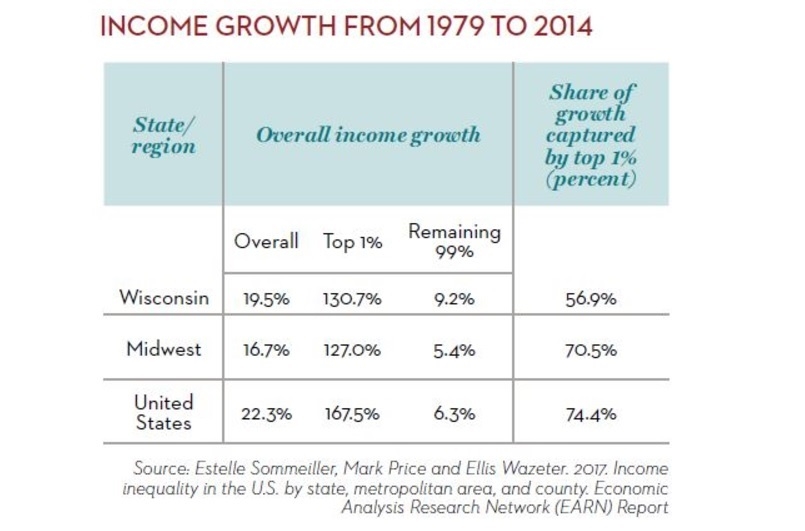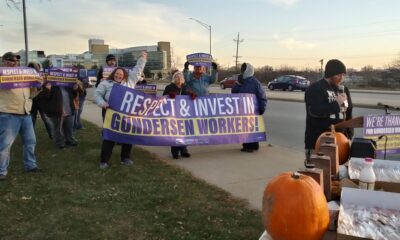Local News
Wisconsin income gap widening between top 1%, everyone else

Income of top 1% has increased 130% since 1979, as compared to 9% for everyone else
Since the Great Recession, there’s a growing gulf between the 1 percent and everyone else in Wisconsin.
New research from the Wisconsin Budget Project show the top 1 percent of earners in Wisconsin have grabbed an outsized chunk of income gains in the state since 2009.
The report says that between 2009-2014, the top 1 percent claimed 25.7 percent of the total income growth. The average incomes of that top 1 percent grew by 17.5 percent as compared to just 9.2 percent for the rest of the Wisconsin population.
In 2014 alone, for every $6 of income in Wisconsin, $1 went to the top 1 percent of earners. Their income was $335,000 or higher that year, while the .01 percent – the top 1 out of 10,000 – earned at least $6.5 million.
Key findings from the report:
- Between 1979 and 2014, the average income of the top 1 percent in Wisconsin grew over 130 percent, while the average income of the remaining 99 percent grew by only 9 percent.
- The top 1 percent in Wisconsin had an average income of $933,000 in 2014, more than 19 times the average income of the remaining 99 percent, which averages around $48,000.
- The gap is even wider at the national level, with the top 1 percent making 27.4 times as much as the average income of the 99 percent.
- The top .01 percent in Wisconsin – the top 1 out of 10,000 – took home 3.4 percent of total income in Wisconsin and had an average income of $19.2 million.
Though the gap continues to grow, researcher Tamarine Cornelius believes there are solutions.
“Even though this is a big problem and it’s not just something that’s happening in Wisconsin, there are steps that we can take,” she said. “Things that we can do at the state level, like raising the minimum wage to make sure people who work don’t live in poverty.
“It’s not like we don’t know what we can do,” she continued. “We do know some ways to make sure that people outside the 1% can get ahead if they work hard. It’s not really happening right now.”
Among other solutions, Cornelius suggests providing better access to health care for adults, who are just above poverty levels.
The report also outlines these solutions:
- Building the skills and education of Wisconsin’s workforce by investing in technical colleges and improving the connections between training and employment.
- Supporting working families. Paid family leave and sick time will help more Wisconsin residents succeed in the workforce, as will a strong child care system and improvements to tax credits for working families.
- Removing unrealistic Wisconsin Shares work hours requirements. Hours requirements do not make sense given the proliferation of jobs with unpredictable schedules. These rules prevent low-wage working parents from receiving child care subsidies provided by the state.
- Ensuring that workers have access to affordable health care.
- Making state taxes more equal across income groups. People with high incomes should pay at least as much taxes relative to income as people with lower incomes do.
- Easing driving suspensions that create barriers to work for people who are unable to pay state or local fines.







